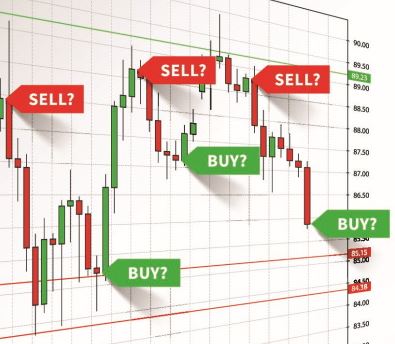In the dynamic world of Forex trading, traders are often faced with the decision of whether to adopt automated or manual trading strategies. Both approaches offer distinct advantages and disadvantages, catering to different trading styles and objectives. In this comprehensive guide, we’ll explore the nuances of automated and manual Forex signal trading, empowering traders to make well-informed decisions tailored to their individual needs.

Introduction
Forex trading, renowned for its potential profitability and volatility, attracts traders worldwide seeking financial success. However, achieving success in the Forex market requires the implementation of effective trading strategies, including the selection between automated and manual trading methodologies. Let’s delve into the intricacies of each approach and uncover the pros and cons associated with automated and manual Forex signal trading.
Understanding Forex Signal Trading
Forex signal trading involves the utilization of signals or indicators to make informed trading decisions. These signals serve as cues for traders to enter or exit positions, aiding in the identification of potential trading opportunities.
Automated Forex Signal Trading
Automated trading systems, also known as algorithmic trading, employ complex algorithms and computer programs to execute trades based on predetermined criteria. These systems analyze market data, identify trading signals, and execute trades automatically without the need for human intervention.
Pros of Automated Trading:
- Efficiency and Speed: Automated systems execute trades swiftly, capitalizing on market opportunities in real-time, thereby eliminating delays associated with manual intervention.
- Emotion-Free Trading: Automated trading removes emotional biases from the decision-making process, ensuring disciplined execution of trading strategies without succumbing to fear or greed.
- Backtesting and Optimization: Automated systems facilitate thorough backtesting and optimization of trading strategies, allowing traders to refine and enhance their algorithms for improved performance.
- 24/7 Market Monitoring: Automated systems operate continuously, monitoring the Forex market around the clock and executing trades even during non-trading hours, ensuring no lucrative opportunities are missed.
Cons of Automated Trading:
- Dependence on Technical Analysis: Automated trading systems primarily rely on technical analysis, potentially overlooking crucial fundamental factors driving market movements.
- Complexity and Technical Issues: The implementation and maintenance of automated trading systems can be complex, with the risk of technical glitches or system failures leading to financial losses.
- Over-Optimization Risk: There’s a risk of over-optimizing trading strategies based on historical data, which may result in poor performance in live market conditions due to changing market dynamics.
Manual Forex Signal Trading
Manual trading involves human decision-making based on market analysis, intuition, and experience. Traders manually analyze signals, interpret market conditions, and execute trades based on their judgment and expertise.

Pros of Manual Trading:
- Flexibility and Adaptability: Manual traders possess the flexibility to adapt quickly to changing market conditions, leveraging their experience and intuition to capitalize on emerging opportunities.
- Holistic Market Analysis: Manual traders incorporate both technical and fundamental analysis into their decision-making process, providing a comprehensive understanding of market dynamics and trends.
- Risk Management Control: Manual traders have greater control over risk management, allowing them to adjust position sizes and employ sophisticated risk management strategies to protect their capital.
Cons of Manual Trading:
- Time-Consuming: Manual trading demands significant time and attention, requiring traders to monitor the market closely and make timely decisions, which can be challenging for individuals with busy schedules.
- Emotional Influence: Emotional biases, such as fear and greed, may influence manual trading decisions, leading to impulsive or irrational behavior and increased susceptibility to market noise and fluctuations.
Conclusion
Choosing between automated and manual Forex signal trading is a crucial decision for traders, with each approach offering its unique set of advantages and challenges. While automated trading systems offer efficiency, speed, and emotion-free execution, manual trading provides flexibility, adaptability, and greater control over decision-making. Ultimately, the optimal choice depends on individual preferences, risk tolerance, and trading objectives. By carefully evaluating the pros and cons of each method, traders can make informed decisions to enhance their trading success and achieve their financial goals in the dynamic Forex market.


